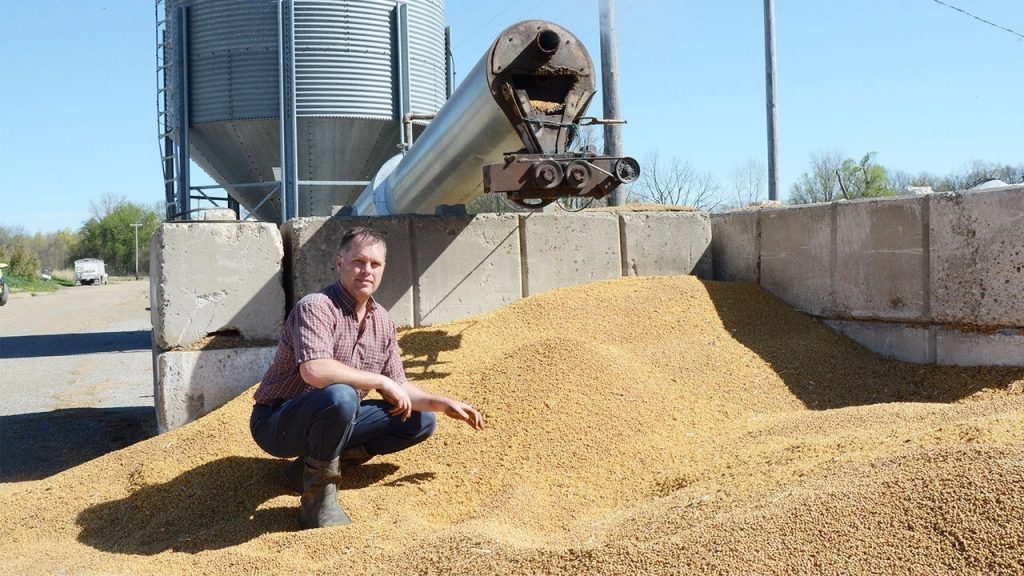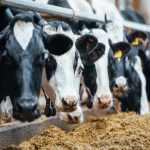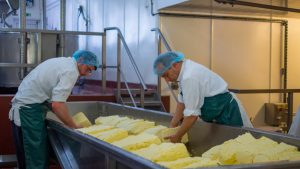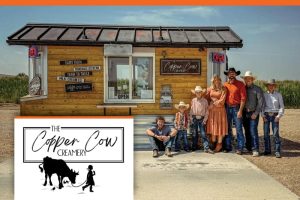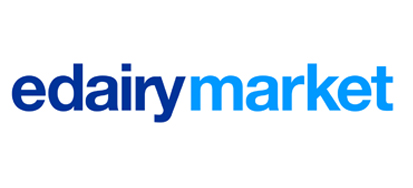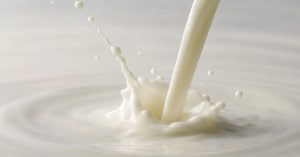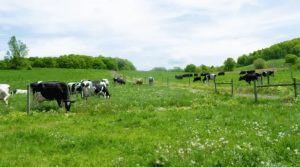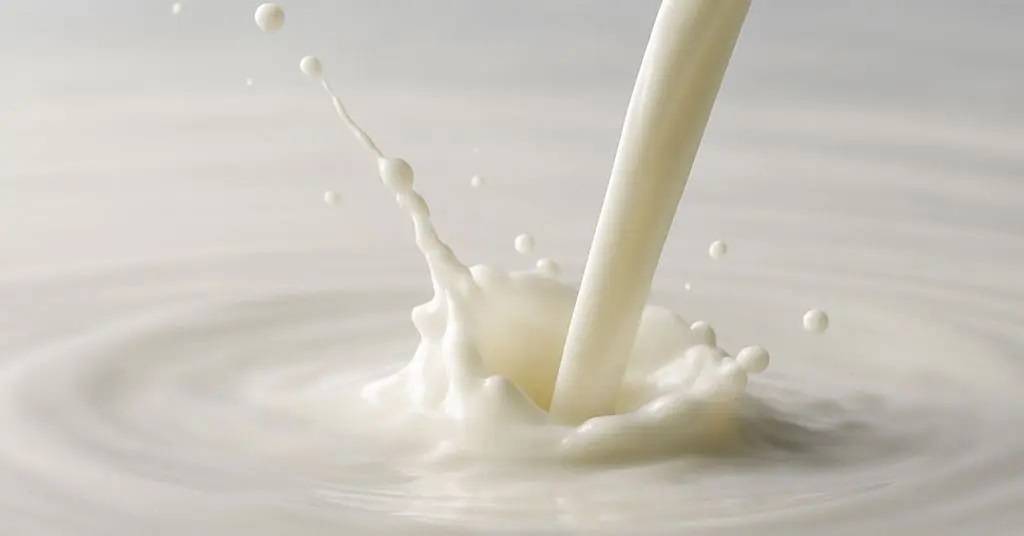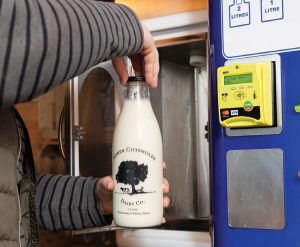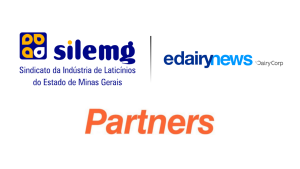
Roasting is the key for optimal value.
Michigan dairy farmer Brian Preston describes the introduction of high-oleic soybeans into the dairy ration as a potentially “once-in-a-generation” change for the dairy industry, emphasizing both the financial and operational advantages of high-oleic beans.
Just six months into feeding high-oleic beans, Preston has reduced costs and improved income. “We got both, which rarely ever happens,” he says.
A fourth-generation farmer, Preston farms with his dad, Keith; uncle, Glenn; and cousin, Adam, in Quincy, Mich., near the Indiana border. With a staff of 13, they milk 1,000 head of dairy cows; raise 4,000 head of contract hogs; and grow 1,600 acres of corn, high-oleic beans and alfalfa.
They raised high-oleic beans last year — a big change for this operation — purchased a used roaster and crusher, and began feeding them in November 2024. The operation is feeding about 8 pounds per head per day, and the milk’s butterfat content went from 4.4% to 4.8%.
The primary difference between commodity soybeans and high-oleic beans is not the percentage of oil, protein and other components, which are essentially the same. The difference is in the fatty acid profile (fatty acids are the building blocks for oils), primarily oleic acid.
Early accounts of a yield drag with high-oleic soybeans have been replaced by numerous university trials and anecdotal reports that yields are now comparable with commodity soybean varieties. The Prestons averaged 62 bushels per acre of high-oleic beans last year.
Higher components, steady volume
In the past, as producers aimed for higher butterfat or protein percentages, volume would reduce and essentially produce the same number of pounds of fat and protein. “What was different with high-oleic beans, we were able to cut out the calcium salts and some of the palm fats for a significant feed savings with higher butterfat and the same pounds of milk,” Preston says.
With higher-producing cows, digestibility of feed sometimes dips, but the high-oleic beans have potential to hold a more steady digestibility level, says Adam Lock, a professor in the Michigan State University Department of Animal Science. “In the big picture, we’re getting more fatty acids absorbed by the cow, so she’s got more nutrients to make milk and maintain body condition,” he says.
When the Prestons first started feeding high-oleic beans, butterfat and protein were both more valuable than they are today. Prices have come down, and the high-oleic beans still are providing a net of about 60-70 cents per cow per day. “This is a big deal that people need to be looking at,” Preston advises.
Lock, who worked closely with the Prestons to work high-oleic beans into their operation, says roasting the beans is key. “We get better responses when they’re roasted as opposed to raw,” he says. “Of course, that’s another layer of potential input costs in terms of roasting on farm and the management, but I also know there are some local feed mills and distributors looking to start roasting for producers. Some large farms with large roasters could maybe handle it for others. Proper roasting is very important to obtain the full benefit, as over- or under-roasting results in less performance.”
Incorporating the beans was a relatively easy adaptation for the Prestons, who put some small unoccupied bins to use. They are raising 300 acres of high-oleic beans, about half of what they need, and are contracting with three other growers in the area for the rest. “Growers take on some potential risk by not taking it to a bonded and insured elevator, but there’s also benefit with a premium and reduced trucking costs,” Preston says. “There has to be a trusting relationship.”
The used electric roaster they purchased is largely a controlled unit producing 120 bushels a day. “But you can adjust the temperature and the speed of the auger, and it does a nice job with consistency,” Preston says. “It really doesn’t take much babysitting, but it is one more thing to do daily. With the roller mill, we need to do a little more work on our particle size. We think we can get more out of the beans if we can break them down smaller.”
Once a week, they use a semi to bring up a load of beans to auger into a bin. “It takes about an hour, where before they just delivered the soybean meal for us,” Preston says.
Farmers should consult their nutritionist and potentially visit farms already successfully using high-oleic soybeans to understand practical implementation, he advises.
Beyond milk components
For the Prestons, other benefits of growing high-oleic beans means breaking a 25-year tradition of growing corn on corn.
Last year, the farm grew high-oleic beans to produce on-farm protein — normally one of the most expensive components of a diet — while purchasing shelled corn. “We used to buy soybean meal and produce our own grain corn to feed. We flipped that,” Preston says.
They’re also excited to introduce a crop rotation. “This will be our first year planting corn into soybean stubble in 25 years,” he says. “So, we think it’s going to improve our corn yields by having that crop rotation.”
A 200-acre crop of triticale also went in the fall that they will harvest as forage in the spring. “We used to grow triticale, but we stopped because it was hurting our corn yields too much,” Preston says. “It delayed planting for the corn, but we anticipate the beans will do well behind the triticale. We’ll be able to harvest three crops in two years off of each acre, producing a significant benefit to our cropping system with more tons of forage.”
There’s also an environmental benefit, as high-oleic beans can displace some of the imported palm oil from plantations primarily located in tropical regions such as Malaysia and Indonesia.
For dairies considering feeding high-oleic beans, Adam Preston says to working closely with a nutritionist to:
-
determine optimal inclusion levels (8% to 12% of diet)
-
ensure consistent roasting and processing
-
balance the overall diet composition
An estimated 1.6 million acres were planted to high-oleic soybeans in the U.S. in 2024, with 2.7 million acres projected by 2027, according to a report prepared for the U.S. Soybean Export Council. Indiana leads in the production of high-oleic soybeans, with several processing facilities in the state.
You can now read the most important #news on #eDairyNews #Whatsapp channels!!!
🇺🇸 eDairy News INGLÊS: https://whatsapp.com/channel/0029VaKsjzGDTkJyIN6hcP1K
